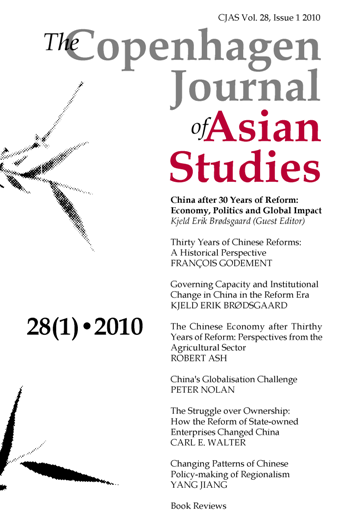Governing Capacity and Institutional Change in China in the Reform Era
DOI:
https://doi.org/10.22439/cjas.v28i1.2834Keywords:
China, political reform, public management, civil servants, Party renewal, institutionalizationAbstract
The Chinese reform process of 1978-2008 has primarily taken place within the economic sphere, involving fundamental changes of the centrally planned economic system. As a result, a hybrid economic system has evolved based on a combination of resource mobilization and allocation by market forces and Party and state domination of the commanding heights of the economy. In the political sphere, reform has been much more limited. During the 1980s there were several periods of substantial political reform, but since the early 1990s reform has largely been synonymous with improvement of the governance system in terms of capacity of institutions and competencies of officials. Thus administrative reform and institutional changes have been placed high on the agenda, emphasizing administrative restructuring and downsizing of government organs as well as Party reform. Party reform and leadership renewal have created an institutionalized political order characterized by incremental change within the framework of authoritarian resilience. Currently, major reform discussion in China primarily takes place within the Party organization and focuses on perfecting the existing political system rather than on introducing Western models and experiences.Downloads
Published
2010-12-10
Issue
Section
Articles


